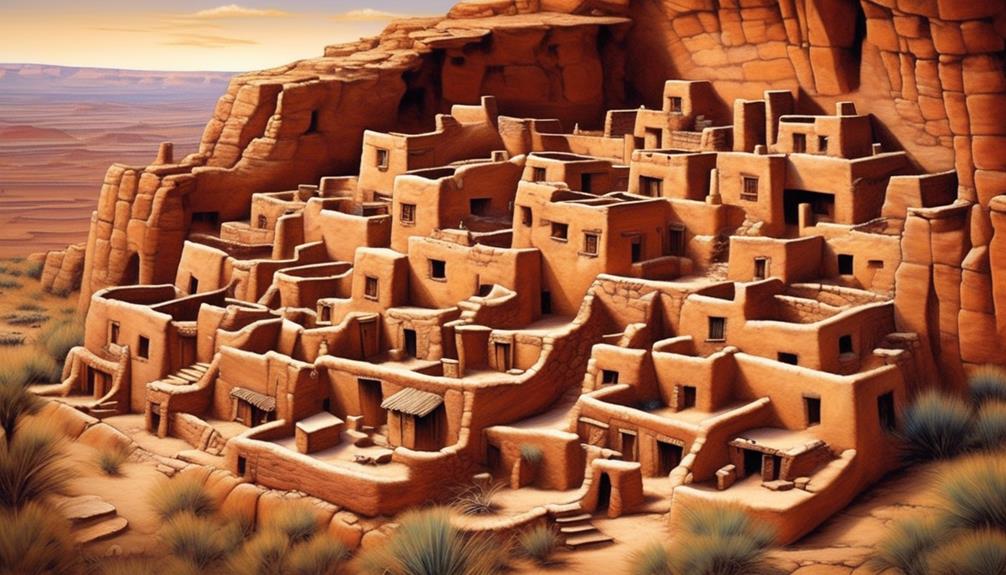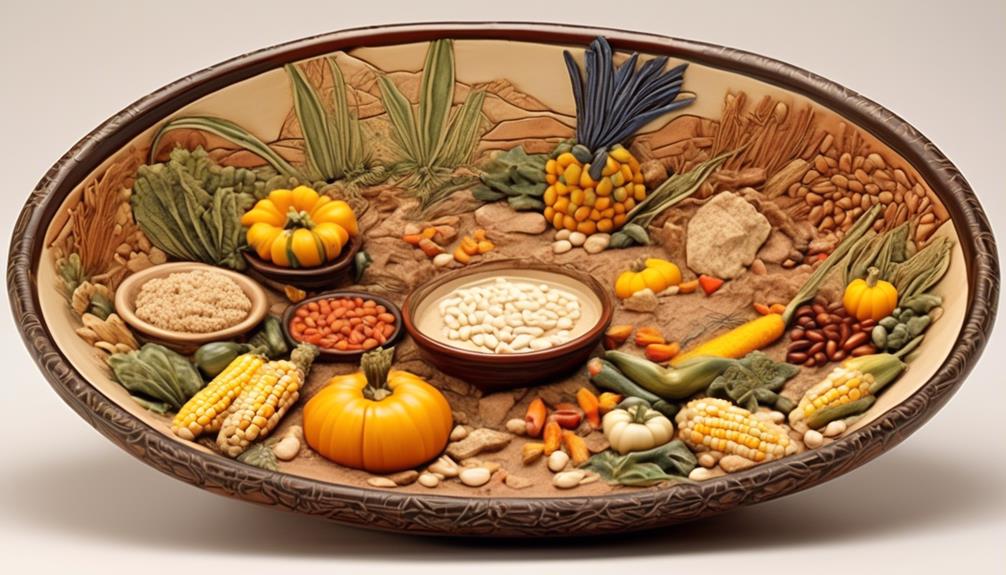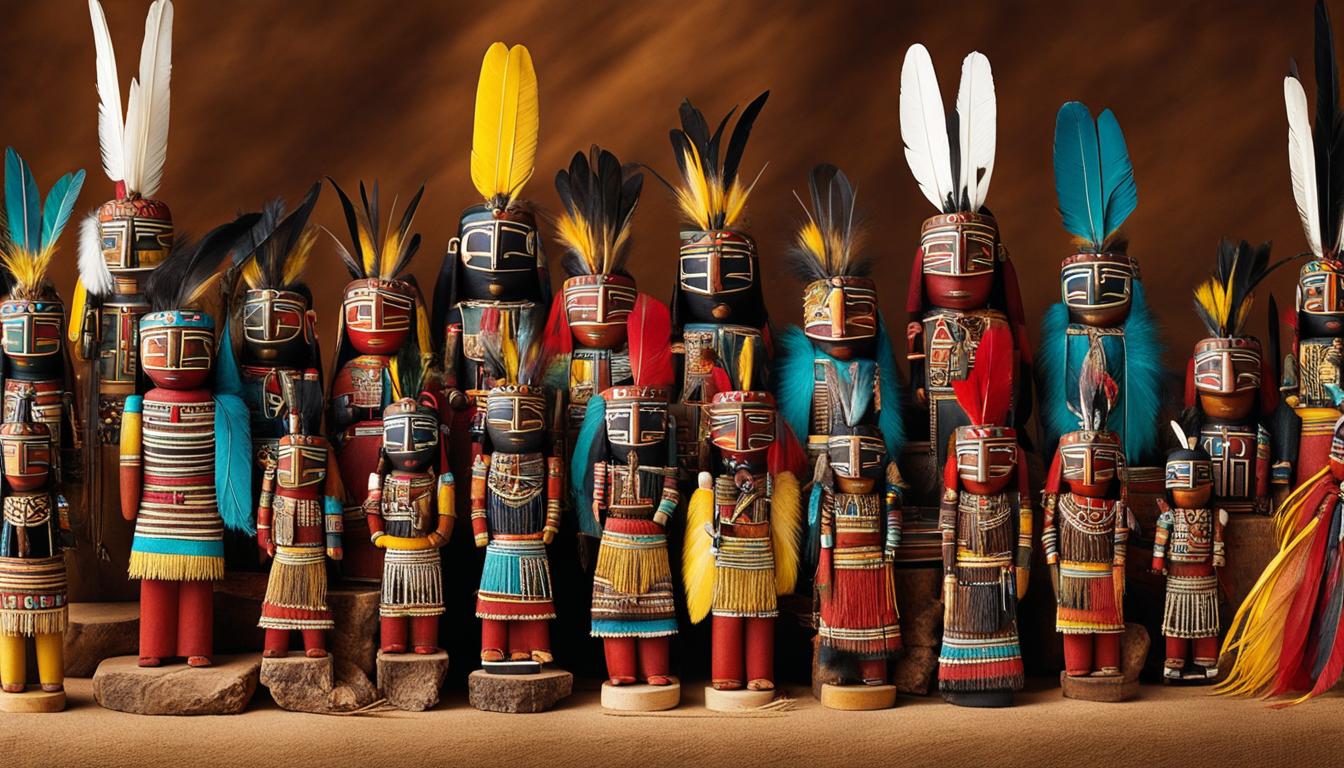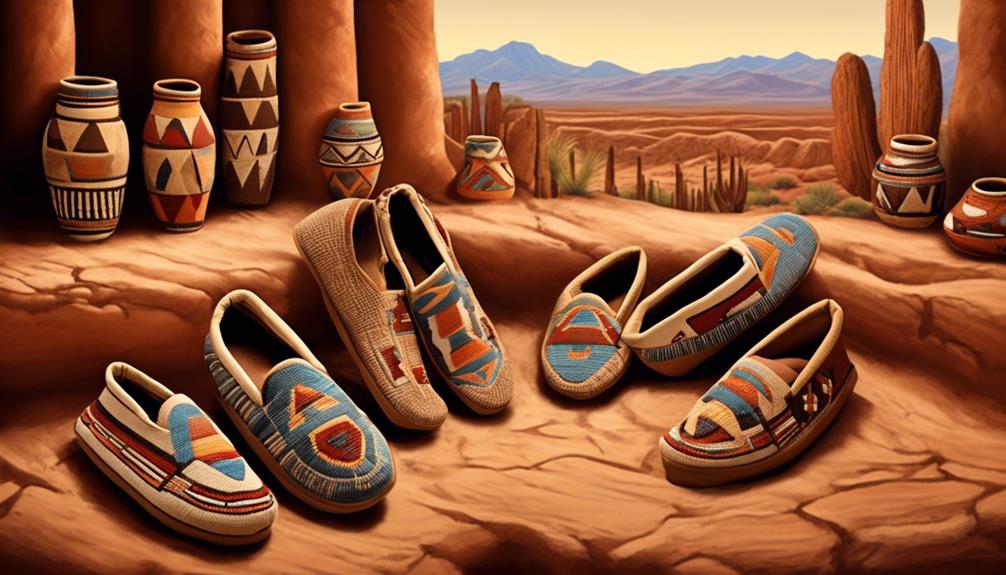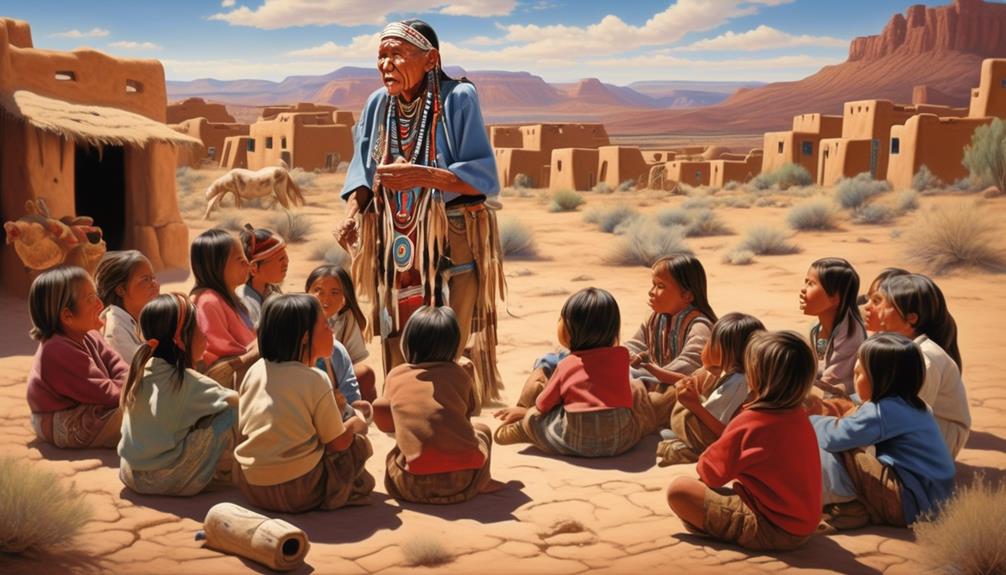The Hopi Tribe, located in the Southwestern region of the United States, has captivated many with its rich cultural heritage and longstanding traditions. Passed down through generations, the Hopi people uphold a unique way of life that continues to fascinate.
From their intricate ceremonial rituals to their distinct artistic expressions, the Hopi Tribe offers a glimpse into a world that is both ancient and yet still thriving today. Their governance structure and spiritual beliefs also play a vital role in shaping their identity.
As we explore the multifaceted dimensions of the Hopi Tribe, we will uncover the deep-rooted values that have sustained this community and continue to captivate the interest of people worldwide.
Key Takeaways
- The Hopi Tribe has ancient origins in the Southwest and their migration patterns have greatly influenced their identity and practices.
- Ceremonial practices, traditional clothing, artistic expressions, and storytelling traditions all play a crucial role in preserving the Hopi Tribe's heritage and spiritual beliefs.
- The Hopi Tribe has a deep spiritual connection to the natural world and their ancestors, with ritual practices and sacred ceremonies expressing gratitude and reverence.
- The Hopi Tribe's governance and leadership structure combines traditional and contemporary approaches, emphasizing consensus-building, inclusivity, and the collective well-being of the community. Cultural preservation is a fundamental aspect of the tribe's mission, with efforts focused on documenting oral histories, revitalizing the Hopi language, and implementing educational programs and language immersion initiatives.
Origins and History
The origins and history of the Hopi Tribe are deeply rooted in the ancient traditions and spiritual beliefs of our ancestors, shaping a rich and enduring cultural legacy. Our ancient origins can be traced back to the Southwest, where the Hopi people have lived for thousands of years.
The Hopi Tribe has a unique history, characterized by a series of migration patterns that have shaped our identity and cultural practices. These migration patterns weren't only driven by environmental factors but also by spiritual guidance, as our ancestors sought to fulfill prophecies and maintain harmony with the land.
Our ancestors' migration paths were guided by the teachings of Maasaw, the Hopi Guardian of the Earth, who led the people to their current land known as the Hopi Mesas. This deep spiritual connection to the land has been integral to our cultural identity and has influenced our agricultural practices, ceremonies, and societal structure.
Understanding our ancient origins and migration patterns provides insight into the resilience and enduring traditions of the Hopi Tribe, reinforcing the importance of preserving our heritage for future generations.
Cultural Traditions
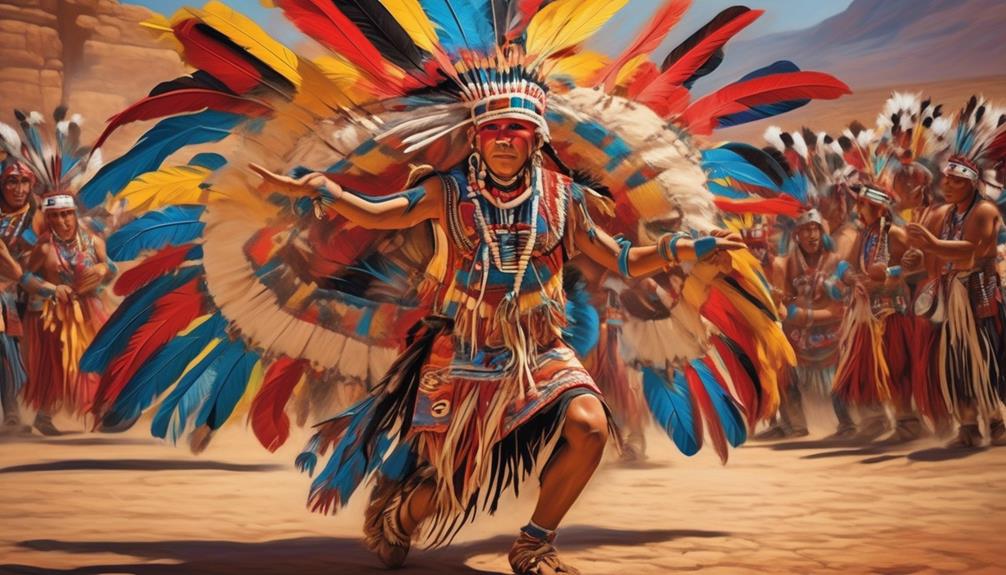
Rooted in our ancient origins and guided by the teachings of Maasaw, the Hopi Tribe's cultural traditions are deeply intertwined with our spiritual connection to the land. Our ceremonial practices are a vital aspect of our cultural identity. These ceremonies, including the Hopi Snake Dance and the Powamu Bean Dance, are essential for maintaining balance and harmony within our community and with the natural world.
Traditional clothing holds significant cultural meaning, with each garment reflecting our connection to the earth and our ancestors.
Artistic expressions and storytelling traditions are integral to preserving our heritage and passing down knowledge through generations. Our artisans create exquisite pottery, intricate basketry, and vibrant katsina dolls, each telling a story and embodying our spiritual beliefs. The art of storytelling, whether through dance, song, or oral narratives, serves as a means of imparting wisdom, history, and spiritual teachings.
These traditions aren't only a source of cultural pride but also a way of maintaining our spiritual and communal connection to our ancestral lands.
Spiritual Beliefs
Guided by our reverence for the natural world and our ancestors, our spiritual beliefs are deeply woven into the fabric of our daily lives and cultural practices. The Hopi people have a profound connection to the land, which is reflected in our spiritual beliefs, ritual practices, and sacred ceremonies. Our spiritual traditions are centered around maintaining harmony and balance with the earth, honoring our ancestors, and preserving the rich tapestry of our cultural heritage.
| Ritual Practices | Sacred Ceremonies | Spiritual Beliefs |
|---|---|---|
| Kiva ceremonies | Powamu (Bean Dance) | Connection to the land |
| Prayer offerings | Niman (Home Dance) | Ancestral reverence |
| Corn planting rites | Flute ceremonies | Balance and harmony |
| Harvest celebrations | Soyal (Winter Solstice) | Prophecy and teachings |
| Water ceremonies | Snake Dance | Community and unity |
Ritual practices such as kiva ceremonies and prayer offerings are integral to our spiritual connection with the natural world. The sacred ceremonies, including the Powamu and Niman dances, serve as expressions of our gratitude and respect for the earth and our ancestors. These practices reinforce our spiritual beliefs, emphasizing the importance of maintaining balance, harmony, and unity within our community.
Governance and Leadership
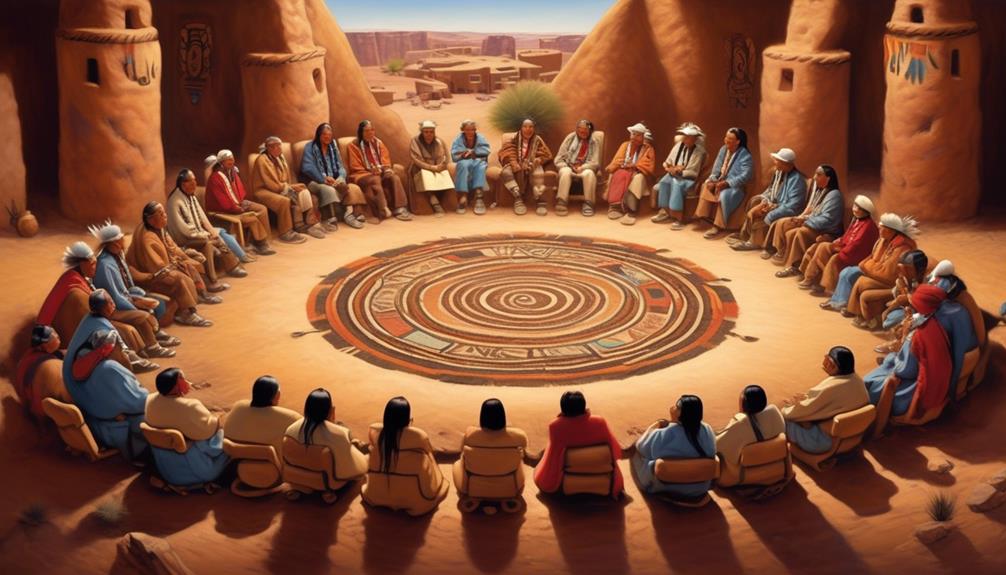
With a deep respect for our traditions and community, we actively participate in the governance and leadership of our tribe, ensuring that our values and heritage are honored and upheld.
- Tribal Council: The Hopi Tribe is governed by a Tribal Council consisting of elected representatives from 12 villages. The council plays a vital role in decision-making processes, addressing issues that affect the entire tribe, and balancing modern governance practices with traditional values.
- Traditional Leadership: The traditional leadership structure is also integral to our governance. Each village has its own religious and secular leaders who guide the community based on ancient wisdom and customs. This dual system of governance, blending traditional and contemporary leadership, reflects our commitment to preserving our cultural heritage while adapting to the challenges of the modern world.
- Decision Making Process: Decision-making processes within the tribal governance are characterized by consensus-building and inclusivity. Our leadership seeks input from all community members, and decisions are made with the collective well-being and cultural preservation in mind. This inclusive approach ensures that the voices of all tribal members are heard and respected.
Preservation Efforts
Preserving our cultural heritage is a fundamental aspect of the Hopi Tribe's mission, embodying our dedication to safeguarding our traditions and ancestral knowledge for future generations. Cultural preservation is central to our identity, and we actively engage in various initiatives to ensure the continuity of our rich heritage.
Our efforts in cultural preservation encompass a wide range of activities, including the documentation of oral histories, traditional practices, and ceremonial rituals. Through these endeavors, we aim to pass down our cultural legacy to the coming generations, fostering a deep sense of pride and belonging within our community.
Language revitalization is another crucial component of our preservation efforts. Our language, Hopi, is integral to the expression of our beliefs, customs, and worldview. Recognizing the importance of language in sustaining our cultural identity, we're committed to revitalizing and promoting the use of the Hopi language within our community. This involves educational programs, language immersion initiatives, and intergenerational language transmission to ensure that our linguistic heritage endures.
Through these concerted efforts in cultural preservation and language revitalization, we strive to uphold the essence of our heritage and strengthen the fabric of our community for generations to come.
Frequently Asked Questions
What Are the Traditional Hopi Methods of Agriculture and How Have They Evolved Over Time?
Traditional Hopi methods of agriculture have evolved over time to adapt to changing climate and environmental conditions.
We utilize sustainable practices to ensure food sovereignty and resilience.
The evolution of agriculture reflects our deep connection to the land and our ability to innovate in the face of challenges.
Climate change impacts have led us to integrate modern techniques with traditional knowledge, preserving our heritage while ensuring a sustainable future.
How Do the Hopi People View the Concept of Land Ownership and Property Rights Within Their Community?
In our community, land stewardship is deeply rooted in our cultural practices. We view the concept of land ownership as a responsibility to preserve and protect our heritage.
Our approach to property rights is guided by the principles of cultural preservation and sustainability. We believe in maintaining a harmonious relationship with the land, ensuring that it continues to nurture and sustain our people for generations to come.
What Are Some Common Misconceptions About the Hopi Tribe and How Do They Address Them?
Addressing misconceptions about the Hopi Tribe is crucial for cultural preservation and tribal identity.
Common misconceptions include oversimplified portrayals of our traditions and beliefs. We counter these by actively engaging in education and outreach, showcasing the depth and complexity of our culture.
How Do Hopi Tribe Members Maintain Their Language and Pass It Down to Future Generations?
We maintain our language through preservation methods like oral storytelling and cultural immersion.
Educational programs in our community focus on teaching the Hopi language to younger generations, emphasizing its importance in preserving our heritage.
Our elders play a crucial role in passing down our language, ensuring that it remains a vibrant part of our identity.
These efforts help us to safeguard our traditions and connect with our ancestors through our language.
What Are Some Traditional Forms of Hopi Art and How Do They Reflect the Tribe's Cultural Values and Beliefs?
We see Hopi art as a vibrant tapestry weaving through time, reflecting our deep cultural values.
Hopi pottery, with its intricate designs, speaks of our connection to the earth and the importance of balance.
Ceremonial dances, rich in symbolism, honor our ancestors and spiritual beliefs.
Through art, we express our interconnectedness with all living things, passing down our wisdom and traditions to future generations.
Conclusion
In conclusion, the Hopi tribe is a fascinating and unique culture with rich traditions and spiritual beliefs. Despite efforts to preserve their heritage, the tribe faces challenges from modern influences and outside pressures.
It's ironic that a tribe known for their resilience and connection to the land now struggles to maintain their traditions in a rapidly changing world.
The Hopi tribe serves as a reminder of the delicate balance between tradition and progress in today's society.
Mary is a passionate writer who brings creativity and a fresh perspective to our team. Her words have the power to captivate and inspire, making her an essential contributor to our content. Mary’s commitment to storytelling and dedication to promoting Indigenous culture ensures that her work touches the hearts of our readers. We’re fortunate to have her as part of our team.
